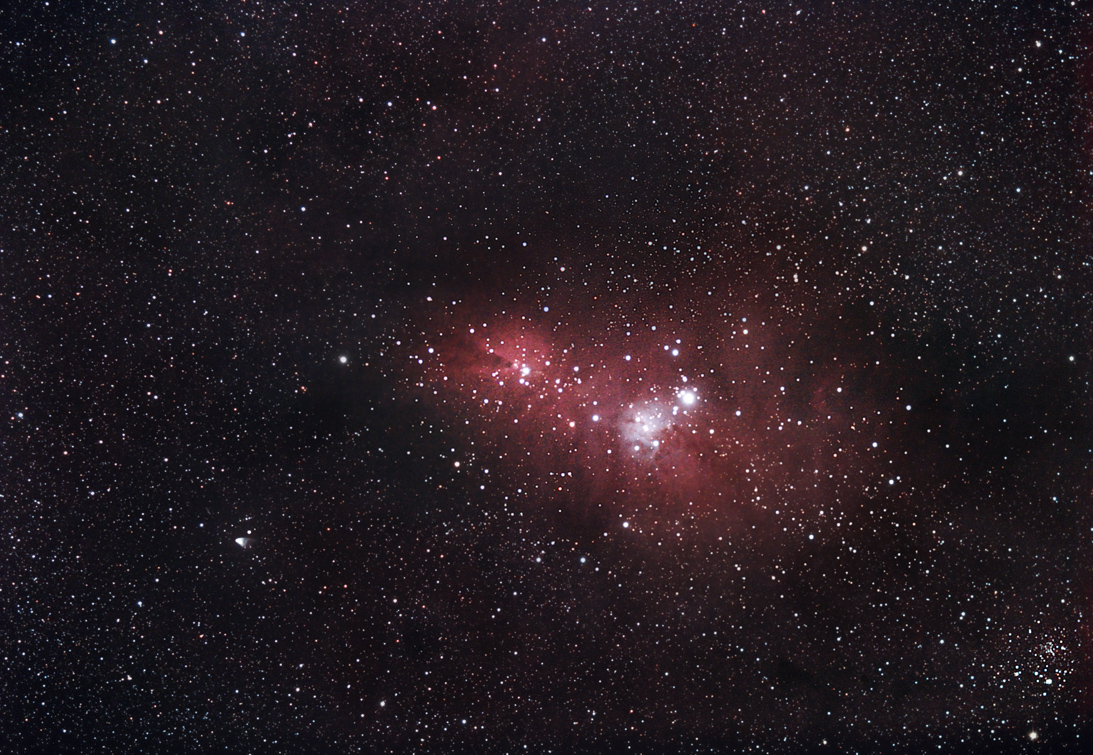The Cone Nebula and Surroundings (NGC 2264, 2261,
2259)
Characteristics:
Magnitude: 3.9 (for bluish Christmas tree cluster region)
Size: About 1 degree (including Cone Nebula and Christmas Tree Cluster
region)
Distance: 2400 light years (Cone Nebula)
RA: 6h 41m 06s
Dec: 9 degrees 52' 59"
Description:
The Cone Nebula is the conical dark nebula just off center, pointing
towards the prominent Christmas Tree Cluster (so named because it looks
like a Christmas tree when viewed vertically). This region is
referred to as NGC 2264 and is part of a larger nebula complex called
the Monoceros Loop, that includes the Rosette Nebula.
Notice the darker areas surrounding NGC 2264 that represent large
regions
of dust. To the lower left is an interesting, comet-shaped object
known
as Hubble's Variable Nebula (NGC 2261), which is a reflection nebula
that
changes intensity as a function of the brightness of its associated
star
(R Monocerotis). In the lower right corner is the prominent open
cluster
NGC 2259.
Photographic Details:
Date: December 26, 2003
Scope: Takahashi Sky 90 at f4.5 with field flattener/focal
reducer, piggybacked on LX90 (which is mounted on a Meade Superwedge).
Autoguider: STV with e-finder.
Camera: Canon 10D.
Filter: IDAS LPS.
Exposures: 11 x 5' at ISO 1600.
Conditions: Temperature 30 degrees F; average transparency;
average seeing; dry; somewhat breezy.
Post-processing: Raw
conversion, adaptive dark frame calibration, alignment, adaptive
addition done in ImagesPlus; Levels,
curves, and layer mask adjustments in Photoshop; selective smoothing of
R, G, B channels done in Pleiades SGBNR software (occasionally "smart
blur" filter was used for regions selected
with the lasso tool within a given channel). Star bloat was
controlled
as a final step by selecting the stars with the magic wand tool, and
then
applying a minimum filter (setting of 1) to reduce star size.
Final
star shaping and enhancement of color saturation done with the
technique
described by Matt
BenDaniel. This was very difficult to process due to the
faint
red nebulosity of this region and the relative Ha insensitivity of the
10D.
Please
note: Graphics on this website may not be reproduced without
author permission.
Back to Deep Sky Objects
Page
Home

